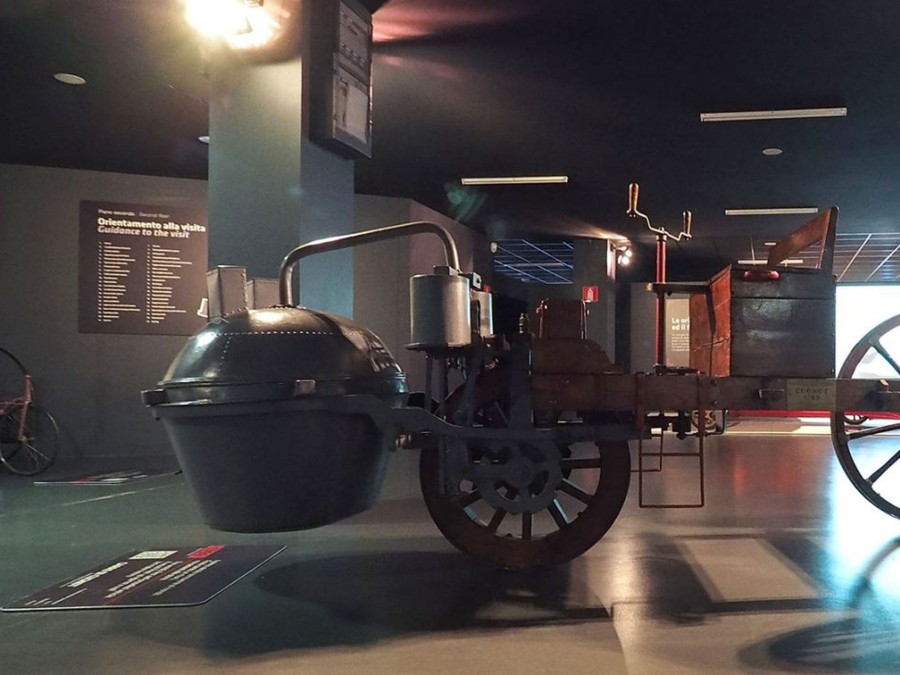It’s 250 years old and it still exists: The first automobile the world ever saw
The Cugnot ‘fardier à vapeur’ was designed in 1769 by a French military engineer looking for a new way to haul heavy equipment to the battlefield. It ultimately failed, but its legacy lives on
Would you believe that a self-propelled vehicle actually existed before the start of the Revolutionary War? The “Fardier à vapeur” or Steam Carriage, was built in 1769 by French engineer Nicolas-Joseph Cugnot for the French army. With a top speed of 2.5 miles an hour, its primary use was to haul artillery.

It was 1769. While missionaries sent by Charles III of Spain were founding the first cities in California and the explorer James Cook was discovering Tahiti, a French military engineer named Nicholas Joseph Cugnot was developing a mechanical system to carry heavy artillery pieces to the battlefield. It was the first automobile in history, a distant cousin of today’s cars.
Cugnot applied the principles of the steam engine, described one century earlier by his fellow Frenchman Denis Papin and perfected in 1763 by the Scotsman James Watt, in what would become a revolutionary invention that gave rise to the industrial era.

Cugnot’s contraption – officially called a fardier à vapeur or steam-powered dray in English – was made up of a gun carriage that would have normally been drawn by horses, but which was adapted for a large boiler where water was heated with firewood, which produced steam. When the steam reached a certain pressure, it powered the pistons of two side cylinders that moved notched discs. The system was similar to a clock’s gears and it transformed the linear motion of the steam engine into a rotational motion, activating the vehicle’s front wheel.
Its many detractors were surely delighted when the vehicle ran into a wall in what is believed to be the world’s first automobile accident.

Cugnot’s carriage was expected to reach a top speed of 9.3 mph (15 km/h), but the absence of any kind of pressure regulation in the boiler made it very difficult to control. To make things worse, the steering system was unwieldy and there were no brakes whatsoever. At nearly three tons of weight, it was not exactly an easy vehicle to handle.
According to testimonies from the era, one of the first tests, which reached speeds of around 3.1 mph (5 km/h), ended with the fardier crashing against a wall, and the project was dropped. But the idea lived on and some of the basic concepts of Cugnot’s vehicle were used later in the 19th century, and still live on to a certain degree in modern automobiles’ DNA.
The prototype built by Cugnot more than 250 years ago still exists and it is on display at the Museum of Arts and Crafts in Paris. In 2010, a group of engineering students built an exact replica and got it to work, driving it through the streets of Paris.
Related Post
A shocking documentary proves that mermaids do exist
SHOCKING Revelation: Thuya, Mother of Queen Tiye, Was the Grandmother of Akhenaten and Tutankhamun—What Ancient Egyptian Secrets Did She Leave Behind?
Breaking News: Astonishing Discoveries at Karahan Tepe Confirm an Extraterrestrial Civilization is Hiding on Earth, and NO ONE Knows!
Breaking News: Researchers FINALLY Discover U.S. Navy Flight 19 After 75 Years Lost in the Bermuda Triangle!
NASA’s Secret Investigation: Uncovering the Astonishing Mystery of the UFO Crash on the Mountain!
Explosive UFO Docs LEAKED: Startling Proof That Aliens Ruled Ancient Egypt!